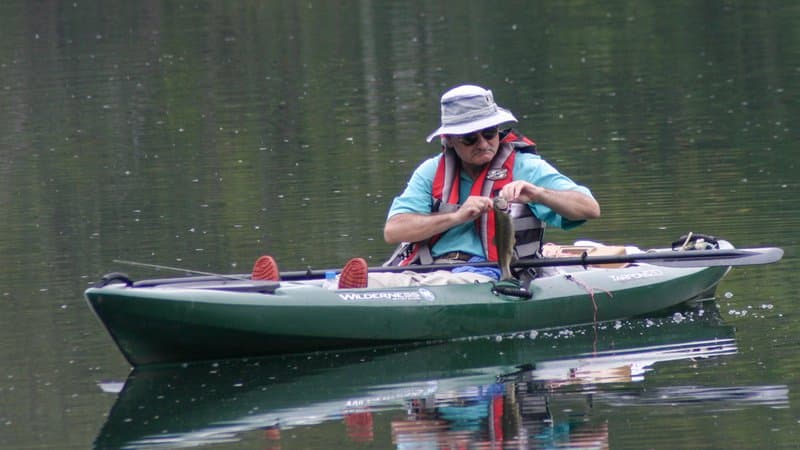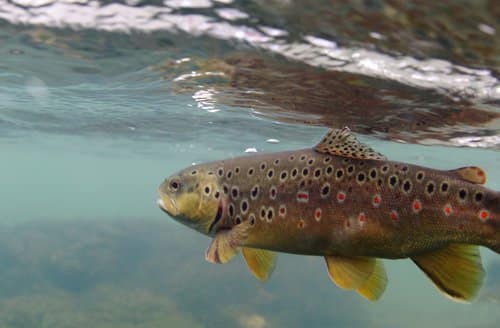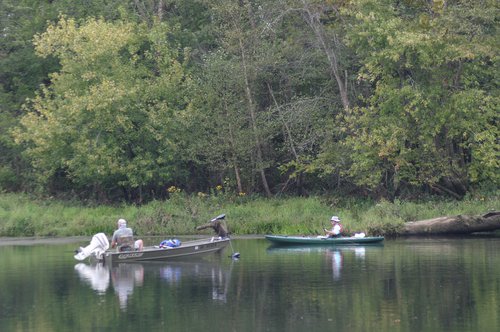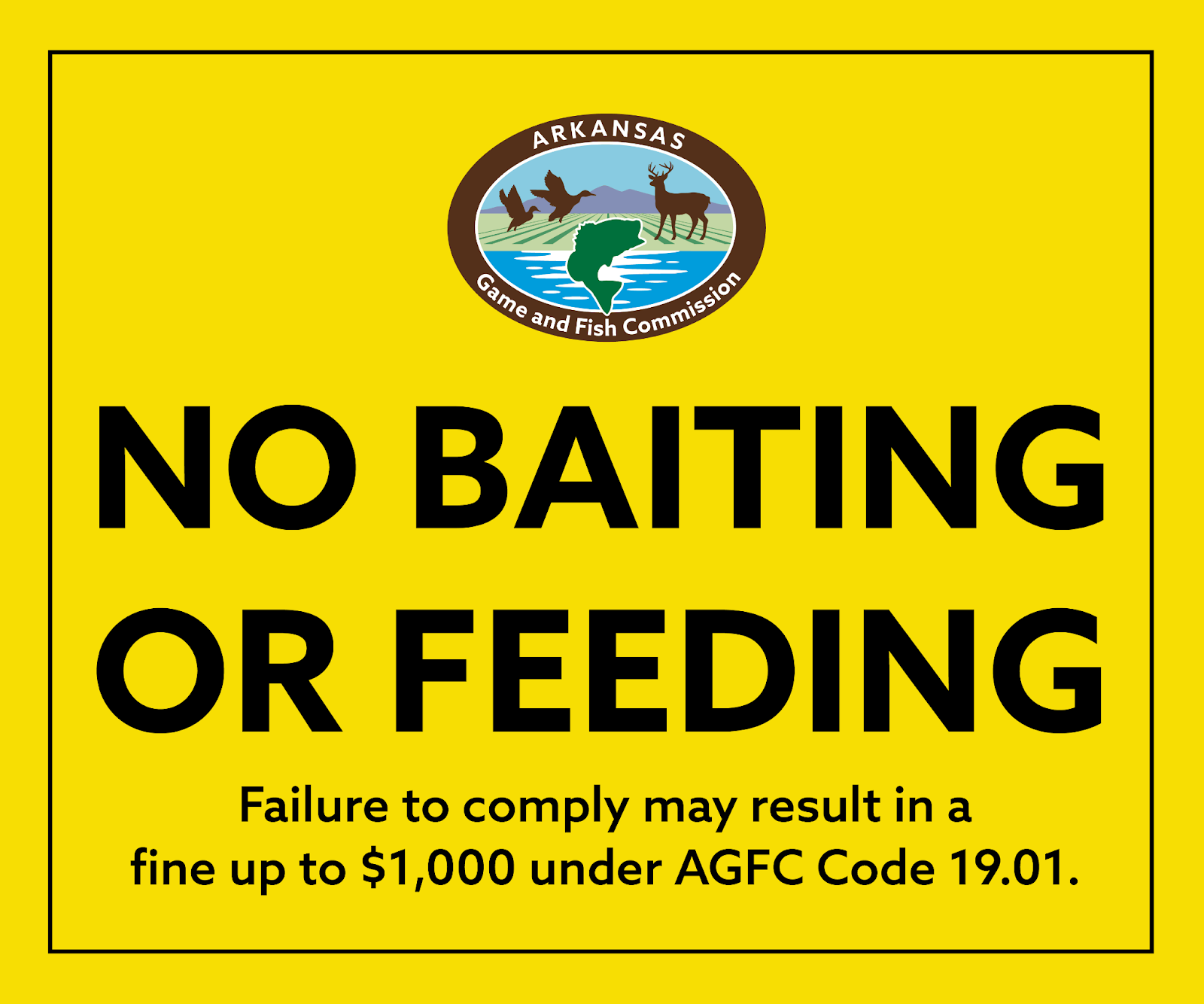Prepare for the cold at tailwater trout locations this summer
ON 07-07-2021

July 7, 2021
Randy Zellers
Assistant Chief of Communications
HEBER SPRINGS — Although not normally thought of as float streams, Arkansas’s trout-fishing areas are quickly gaining solid reputations with the growing numbers of kayak anglers in the Natural State. The Arkansas Game and Fish Commission would like to remind all boaters that preparing for a safe day on cold, flowing water in summer requires extra precautions beyond what most flat-water paddlers typically experience.
Chill factor
The largest difference most boaters will recognize is the extremely cold water that flows through the dams on large reservoirs, creating the environment that fuels Arkansas’s trophy-class trout fishing. That cold water is great for wading anglers to enjoy a cooldown during summer’s heat, but boaters should be aware of its temperature.
“Daytime air temperatures around 90 degrees sort of give people a false sense of what that water temperature really feels like,” Joe Huggins, AGFC Boating Education coordinator, said. “Even in summer, trout-fishing areas have water temperature in the 50- to 60-degree range. A lot of anglers may go unprepared and not have the proper clothing available to help keep their body temperature warm in the case of a spill. Anglers in jon boats and river-style boats don’t necessarily expect to get wet, but it can happen. With kayaks it’s much more likely.”
Huggins isn’t suggesting people wear woolen coats while angling in summer, but simply to have a dry change of clothes at the ready in a waterproof dry bag in case of a spill.
“Even in warm weather, cold water can shock the system and cause hypothermia, so being prepared is important.”
Suit up
Another item kayakers and other paddlers should always be prepared to wear is a properly fitted U.S. Coast Guard approved life jacket.
“I know we sound like a broken record, but it’s just that important,” Huggins said. “And even more so in cold water.”
Huggins explained that the body’s natural reaction to being suddenly shocked with a blast of cold water is to gasp, which is inhaling quickly. If you’re submerged when that happens, you run a very good chance of taking in a lot of water. The life jacket can get your head up quickly to help prevent as much water from being taken in and help you while you may be struggling to cough that water back out.
“Cold water also impacts your muscles very quickly,” Huggins said. “Even good swimmers will find themselves running out of steam pretty fast when the cold starts sapping their strength. That life jacket will keep you at the surface so you can use your energy getting to the boat or the bank and out of the water.”
Huggins suggests paddlers stay away from inflatable styles of life jackets, as they must be triggered to work effectively.
“There are many traditional life jackets that are crafted specifically for kayaks and canoes to provide floatation without being too bulky to paddle or fish,” Huggins said. “They’re usually in the same price range as standard life jackets, and they’re less expensive than the inflatable ones.”

Current events
Current also plays a huge role in tailwater fishing downstream of dams. Water that may seem relatively flat can increase dramatically and quickly when the dam’s gates are opened to regulate water levels or produce electricity through hydroelectric turbines.
Southwestern Power posts generation schedules at https://www.swpa.gov/generationschedules.aspx to help people plan ahead, but learning what some of those generation levels mean can be tricky. Not only does the generation impact your fishing, it can have a serious effect on being able to paddle. In many cases, shuttling to an upstream launch and leaving a vehicle at a downstream take out will be much more beneficial than trying to fight the current if you’re caught on the water when it begins to flow quickly. In many cases during the heat of summer, the current will be rolling all day to provide electricity for homes from an increased demand brought on by air conditioning.
If you do fall in the water with current, Huggins says it’s important to keep your feet pointed downstream in case you’re pushed into any rocks or branches.
“Your life jacket will help keep your head above water, but you also need to protect your head from injury,” Huggins said. “Your feet will also help you push off snags better and get to shore.”
Getting to the shore quickly should be your primary concern if you’re being swept downstream. You can always regroup and retrieve your kayak or canoe, but getting to safety is the first step.
Huggins says that any anglers in boats also should be careful not to get downstream of their boat, as it can pin you to any snags or hit you from behind.
“Moving water is much more powerful than many people realize,” Huggins said. “And if you’re pinned, there’s not much you can do to free yourself.”
Don’t float alone
Paddling in a group is not only more enjoyable, it adds to the safety of the outing. More kayakers in your group means more eyes on the lookout for any dangers as well as more hands in the event help is needed. While you may never need to carry your canoe or kayak across dry areas on Arkansas’s trout tailwaters, many hands still make light work of loading and unloading your gear at the put in and take out points. More people in your party also means more vehicles to set up and shuttle between access points. And should you need assistance from the water, another angler nearby can throw you a tow rope to pull you to safety quickly.
“A throwable life preserver cushion tied to a rope is something I’d recommend for everyone,” Huggins said. “A U.S. Coast Guard-approved throwable device is required for boats 16 feet and longer, but it’s just smart to have one on every boat. Tie it to a throw rope and it can make the difference between saving a person from danger and putting yourself in that same dangerous situation trying to rescue them.”
If you’re on the receiving end of the help, be sure to hold the life preserver to your chest and don’t try to put it over your shoulders like a backpack.
“Holding it to your chest will keep your head facing up, but if it’s put on your back, you’re likely to be forced face down,” Huggins said. “The cold water is already working against your muscles, so you don’t want to use up the energy you have left fighting against an improperly used life preserver.”

If you can’t find a fishing partner to come with you, at least file a float plan with someone who is responsible.
“Tell them where you’re going, and when they should expect you to return,” Huggins said. “And be sure to check in with them when you’re back. Phones can certainly help if you’re in an emergency situation, but they can get wet or lost in a spill, so it’s always smart to have a backup.”
The AGFC and its federal partners stock nearly 1.5 million trout in The Natural State each year to produce angling opportunities for Arkansans and a strong reputation in the trout-fishing world. With the right preparation and knowledge, tailwater fisheries can produce some of the hottest fishing action during the dog days of summer.
Recent News

Baiting wildlife illegal on Lake Conway
Nov. 22, 2024
Subscribe to Our Weekly Newsletter E-mails
Don’t miss another issue. Sign up now to receive the AGFC Wildlife Weekly Newsletter in your mailbox every Wednesday afternoon (Waterfowl Reports are published weekly during waterfowl season and periodically outside the season). Fishing Reports arrive on Thursdays. Fill in the following fields and hit submit. Thanks, and welcome!

